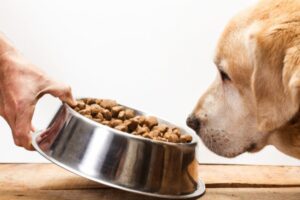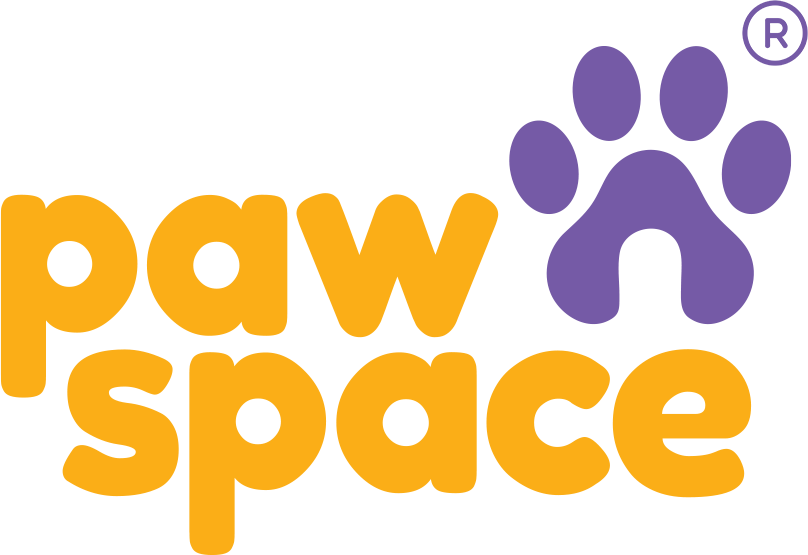Giving your dog food in bangalore, the right amount of food is most crucial to their longevity, energy, and health. Let’s see how much to feed by age, size, activity, and type of food. Discover the secrets of interpreting feeding charts, measuring, and staying out of the overfeeding trap. And find answers to your most frequent questions about mealtime protocol and nutrition.how much should i feed my dog
Table of Contents
Toggle- Introduction
- How Much Should I Feed My Dog?
- 1. Begin with Life Stage and Age
- 2. Take Size and Breed Into Account
- 3. Consider Activity Level
- 4. Use Feeding Charts as a Guide
- 5. Monitor Body Condition, Not Just the Bowl
- 6. Don’t Forget Extras and Treats
- 7. Gradually Transition Portions
- 8. Wet Food, Dry Food, and Raw Diets
- 9. Use a Calorie Calculator
- Pawspace: The safe space for your pets
- Why Choose Pawspace?
- Conclusion
- FAQs
- 1. How often should I feed my dog?
- 2. Can I free-feed my dog?
- 3. How can I tell if I’m overfeeding?
- 4. Do I feed weight or age?
- 5. Do I have to feed each dog food differently?
Introduction
It might be as easy as feeding your dog daily: scoop, serve, repeat – but it’s one of the most critical choices you make for their health over the long term. Underfeeding results in malnutrition and a stunted growth rate, while overfeeding creates obesity, joint issues, and lifelong disease. The ideal portion is based on countless variables, such as your dog’s age, weight, breed, activity level, and food type.
In this blog, we’ll discuss how to calculate the proper amount of food to feed your dog, how to make adjustments in portions over time, and how to know you’re providing your pup with the nutrients they require to be healthy.
Although their guidance isn’t set in stone, veterinarians typically recommend feeding the average adult dog twice daily. People also often feed their dogs twice per day to mimic their own feeding times for breakfast and dinner — after all, dogs are part of the family!

How Much Should I Feed My Dog?
1. Begin with Life Stage and Age
Dogs require varying nutritional elements at various life stages:
- Puppies need more calories, protein, and nutrients to sustain fast growth and development. Puppies typically have 3-4 meals a day until they reach six months of age.
- Adult dogs (1-7 years) require a balanced food to keep them energetic and healthy. Two meals a day should suffice most adult dogs.
- Older pets (7+ years for little breeds, 5+ years for large breeds) might require fewer calories but additional joint-supplementing nutrients such as glucosamine and omega-3 fatty acids.
- Feeding a puppy adult dog food, or vice versa, an adult dog a puppy food, can lead to nutrient imbalance, so always select a formula suitable for your dog’s life stage.
2. Take Size and Breed Into Account
Your dog’s weight and breed have a big role to play in how much they should be fed:
- Small dogs (less than 10 kg) are high metabolics and can require more calories per kilogram of body weight than big dogs.
- Medium dogs (10-25 kg) need moderate sizes and like frequent feeding times.
- Large and giant breeds (over 25 kg) need to eat more overall but can develop joint problems if overfed. Large-breed dog food aids joints and bones.
- Breed characteristics also play a role. Labradors, for instance, overindulge, while Greyhounds are lean with smaller stomachs.
3. Consider Activity Level
A dog’s energy level is quite different depending on lifestyle:
- High-energy dogs (working dogs, agility dogs, or outside dogs that get regular playtime) require extra calories to keep them going.
- Moderately active dogs (play and daily walks) need a moderate amount to keep them in a healthy weight.
- Sedentary dogs (house dogs or older adults) needless to avoid weight gain.
- Spayed or neutered dogs have a slower metabolism and may need a little less food than intact animals.
4. Use Feeding Charts as a Guide
Most commercial dog foods come with a feeding chart on the label. The charts provide the daily portion sizes based on your dog’s weight. For example:
| DOG WEIGHT | DAILY FOOD AMOUNT (Dry Kibble) |
| 5 kg | ¾ to 1 cup |
| 10 kg | 1 to 1½ cups |
| 20 kg | 1¾ to 2½ cups |
| 30 kg | 2½ to 3½ cups |
These are rough estimates and are applicable to average activity levels. Always check the caloric content of your dog food explicitly, as various recipes contain varying caloric contents.

5. Monitor Body Condition, Not Just the Bowl
Feeding charts are useful, but the body condition of your dog is the final measure of whether they are consuming the correct amount. Utilize the Body Condition Score (BCS) scale from 1 (thin) to 9 (fat). A healthy dog should:
- Have a waist that is visible from overhead
- Have an abdomen that tucks up from the side
- Be easily able to feel ribs but not be able to see them
- If your dog is losing or gaining weight, reduce their portions appropriately.
6. Don’t Forget Extras and Treats
Treats are a wonderful training aid and bonding activity, but should comprise only 10% of your dog’s daily calorie intake. Table food, chews, and high-calorie treats add up fast and cause weight gain.
Rather than treats, use healthy treats such as baby carrots, apples (seedless), or commercial low-calorie treats. Always include treats in your dog’s overall daily calories.
7. Gradually Transition Portions
Your dog’s nutritional requirements will vary with time. Rebalance them every few months or after significant changes such as:
- New exercise routine
- Gain or loss of weight
- Illness or after recovery from surgery
- Growth from puppy to adult food
- If you’re not sure, have your veterinarian provide a customized feeding plan.
8. Wet Food, Dry Food, and Raw Diets
The food you feed also comes into play when it comes to portion size:
- Dry food (kibble) is calorie-dense and simple to measure.
- Wet food is higher in water content and lower in calories per gram, so more can be consumed.
- Raw or home-prepared diets require careful planning to ensure balanced nutrition. Always seek the advice of a vet or canine nutritionist before switching.
- Mixing wet and dry food is common, but do make sure to adjust the amounts not to overfeed.
9. Use a Calorie Calculator
If you’d like a more accurate estimate, you can use a dog food calorie calculator. It takes into account your dog’s weight, activity level, and the calories in the food he eats to make a suggestion of what to feed daily. You can get one from a Dog Food Advisor or ask your vet for a personal suggestion.
Pawspace: The safe space for your pets
We at Pawspace are dedicated to providing top-notch care and companionship for your
beloved pets. Honoured to be India’s biggest pet-centred community! Created and curated by pet parents.
Our services include pet grooming, pet boarding, pet sitting, doorstep dog training, dog walking, pet taxi/cab, pet relocation, pet funeral, cat grooming, etc.
Why Choose Pawspace?
- Available on demand for pet parents everywhere
- Verified caregivers with a 5-point checklist & rigorous background checks
- Be at peace by receiving regular updates through chats, photos and videos
Conclusion
Navigating the right amount of food into your dog is a marriage of science, observation, and devotion. Begin with the data on your dog food label, but don’t leave it at that track your dog’s weight, energy levels, and overall health to adjust their portion sizes. All dogs are unique. What is suitable for one may not be appropriate for another.
If unsure, ask your vet. A fat, full dog is a healthy, content companion and every pet parent’s dream.

FAQs
1. How often should I feed my dog?
Two times a day is best for most adult dogs. Puppies require 3-4 meals, and seniors can do well on smaller, more frequent portions.
2. Can I free-feed my dog?
Free-feeding (food out all the time) causes overeating and obesity. Scheduled eating is best for you and aids training and digestion.
3. How can I tell if I’m overfeeding?
Look for weight gain, absence of visible waist, or inability to see ribs. Refer to a body condition score chart or consult your vet for guidance.
4. Do I feed weight or age?
Both are important. Work out the correct amount by your dog’s ideal weight and stage of life. Use guides and consult your vet.
5. Do I have to feed each dog food differently?
Yes. Different brands and formulas have different calorie density. Always check the feeding guide on the packet and vary accordingly.

















